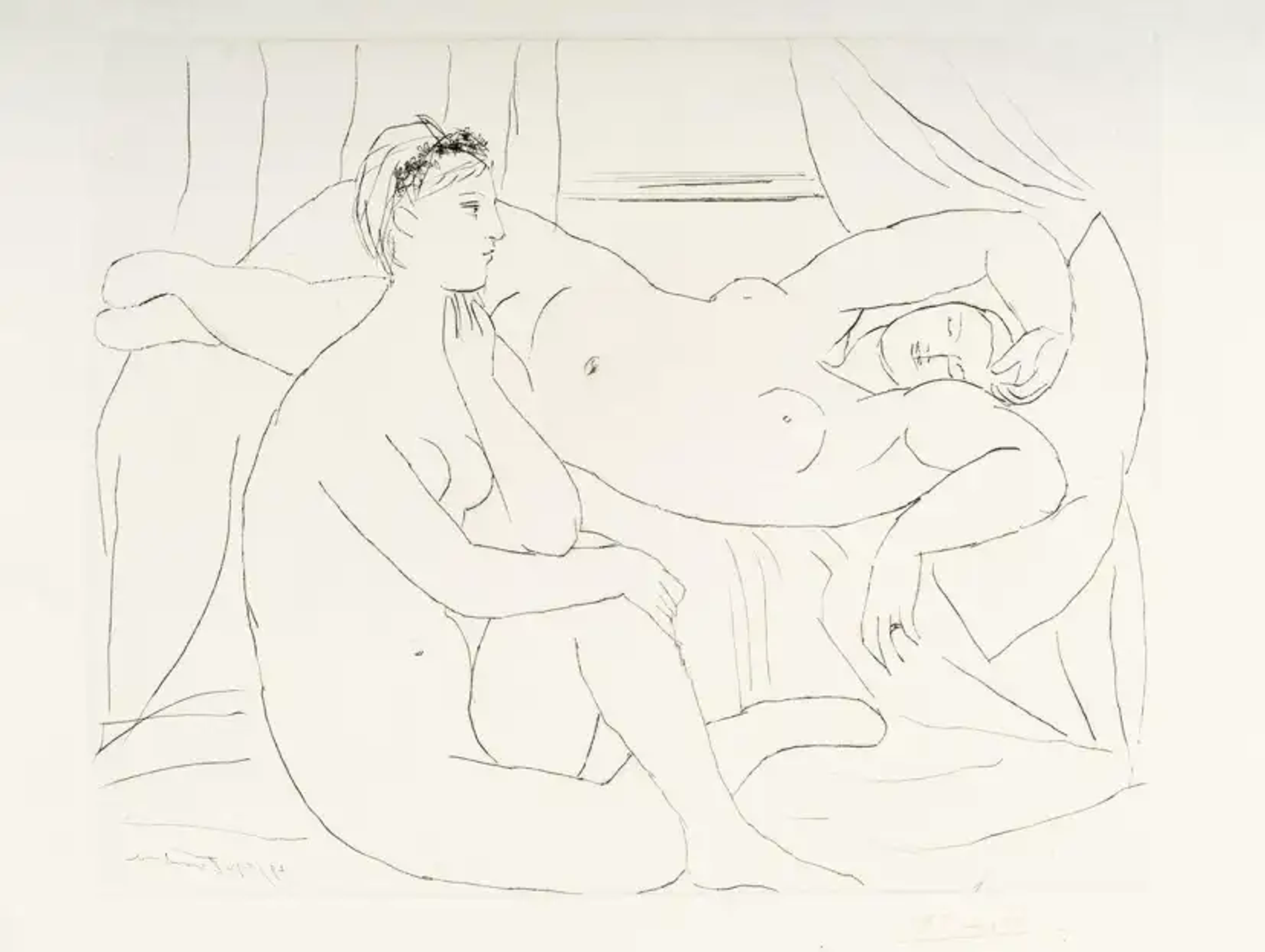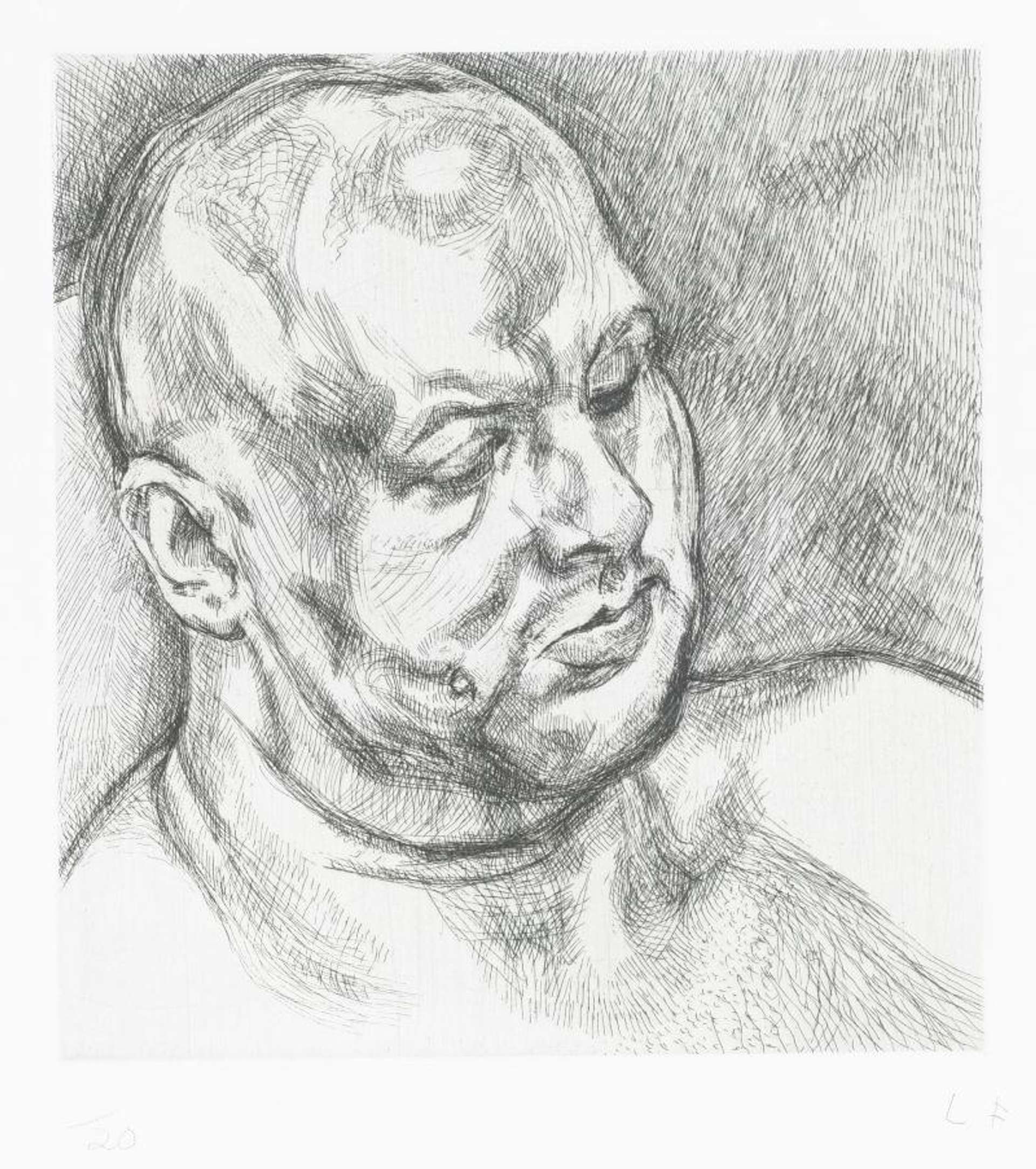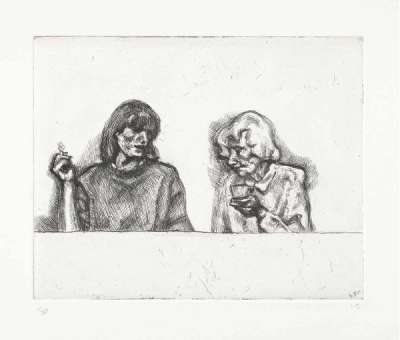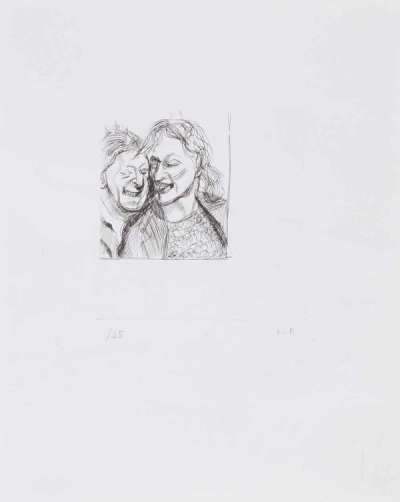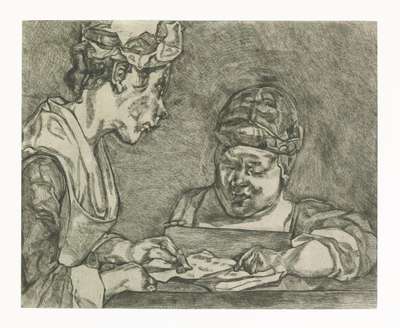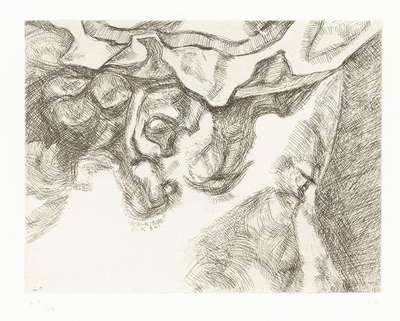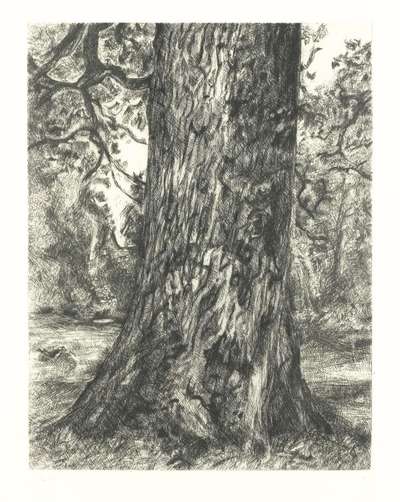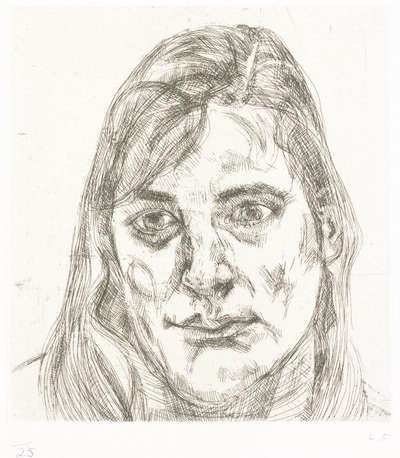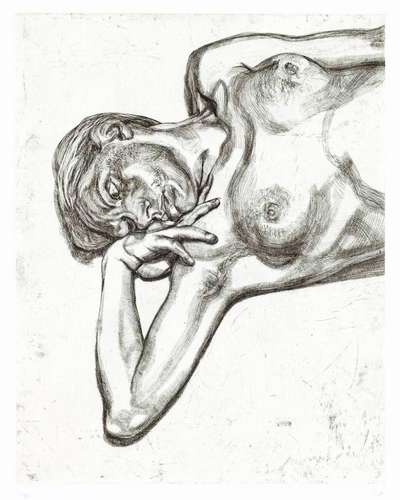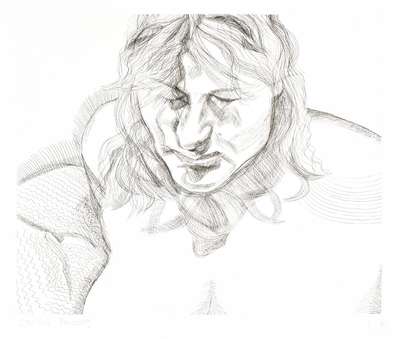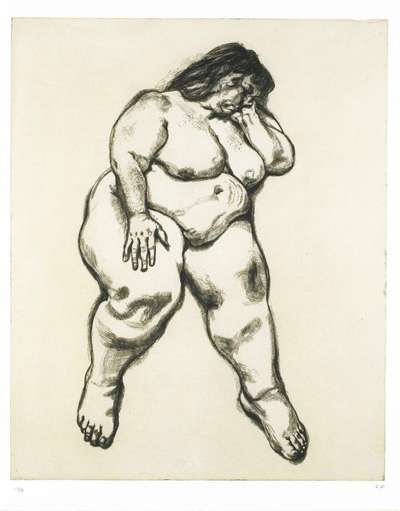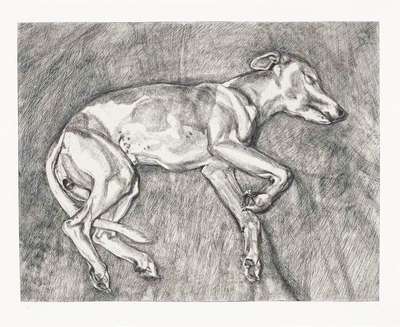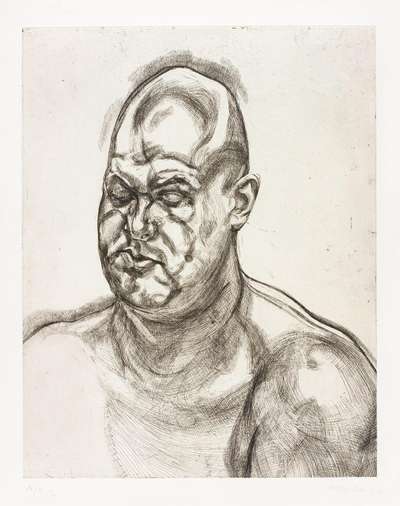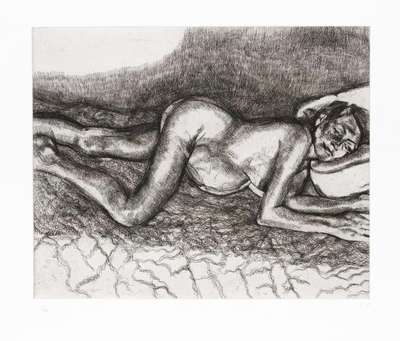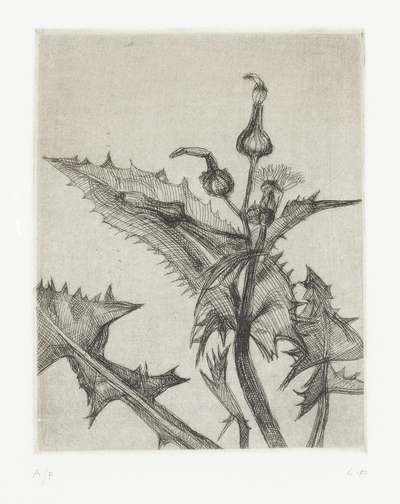Lucian Freud’s Unlikely Friendship with Kate Moss: Art, Tattoos, and a Transformative Portrait

 Image © Goodfon.com / Kate Moss © Surly 2023
Image © Goodfon.com / Kate Moss © Surly 2023
Lucian Freud
57 works
Key Takeaways
The unlikely friendship between Lucian Freud and supermodel Kate Moss resulted in a moving artistic collaboration, culminating in Naked Portrait 2002. Despite their contrasting worlds, their bond transcended celebrity, revealing deeper layers of vulnerability and creative respect. The portrait, painted while Moss was pregnant, captured her transformation into motherhood, and portrayed the individual behind the glamour. Their collaboration bridged art and fashion, leaving a lasting legacy in both realms.
In the intersection of art and celebrity, few collaborations have been as unexpected and as revealing as the friendship between Lucian Freud and Kate Moss. Freud, one of the most revered British painters of the 20th century, is known for his penetrating, unvarnished depictions of the human form. Moss, by contrast, was the quintessential 1990s supermodel; a face synonymous with fashion, beauty, and the fleeting world of celebrity. Yet, in 2002, these two iconic figures from seemingly opposite ends of the cultural spectrum came together in a way that would challenge the traditional boundaries between art and fame. Their collaboration, culminating in Naked Portrait 2002, transcended the superficialities of fashion and celebrity, revealing a deeper connection that continues to resonate in both the art and fashion worlds.
The Unlikely Meeting of Two Icons
In the world of art and fashion, the meeting of Freud and Moss seemed improbable. Freud, a painter rooted in traditional techniques and renowned for his painstakingly slow and methodical approach, existed in a different universe from Moss, the face of 1990s supermodel culture and a symbol of transient glamour and celebrity. Moss had long admired Freud's work, and in an interview for the style and culture magazine, Dazed and Confused, publicly expressed her desire to be painted by him. This ambition reached Freud’s ears, leading to one of the most intriguing artistic collaborations of the early 2000s.
Freud typically avoided painting celebrities, preferring to work with individuals he knew well, such as family members and close friends. For Moss, however, Freud made an exception. His decision to paint Moss marked a rare departure from his usual practice, and what began as an unusual artistic endeavour, evolved into a close friendship, despite the two coming from opposite ends of the social and cultural spectrum. Moss, a fixture of the ephemeral world of fashion, and Freud, a giant of contemporary art known for his realistic study of the human body, found a connection deeper than the surface layers of fame and art.
Naked Portrait 2002: An Iconic Collaboration
A Rare Celebrity Subject
Freud’s choice to paint Moss was an intriguing challenge for the artist. Known for avoiding celebrity commissions, Freud had famously declined to paint figures like Princess Diana, claiming that their public personas cast an impenetrable sheen of glamour. With Moss, he was confronted by a subject who had been scrutinised and idolised by the camera for years. Moss, at the height of her fame, was also pregnant when the sittings began, adding a layer of intimacy and vulnerability to the process. Freud decided to capture this unique moment in her life, beginning his portrait with her slightly pregnant stomach before it grew further.
Over the course of nine months, Moss sat for Freud in lengthy, seven-hour sessions that took place late into the night. From 7 PM to 2 AM, she would pose in his Holland Park studio, slowly learning the discipline of his world, a far cry from the fast-paced world of modelling. Freud, known for his exacting methods, even chastised her for being a few minutes late, reinforcing the seriousness with which he approached his work. In this time, the two developed a bond that transcended their differing worlds. Moss later remarked that she could not refuse Freud, saying, “You couldn't say no to Lucian. Very persuasive”.
The Process and Final Work
The final product, titled Naked Portrait 2002, was a full-length reclining portrait of Moss, capturing her in a moment of physical transformation as she prepared for motherhood. Moss’s typical slim figure, often captured as a symbol of fashion’s ephemeral allure, was here transformed into a more substantial, almost monumental figure. Freud’s meticulous gaze took in every detail, portraying Moss as a robust, corporeal presence. Her body, disproportionately large as it approaches the viewer, seems animated with life, overshadowing her iconic face which was usually the focus of her image. The painting was not simply a portrait of Moss, but a study of her physicality, avoiding the perfect glamour that had defined her public image. It showcased Freud’s ability to see past the expected exterior of a celebrity, revealing the raw reality beneath. Moss, who was used to being viewed through the lens of the fashion world, found herself scrutinised in a completely new way. Freud’s exacting eye exposed every detail, making her a subject of intense, objective study.
One of the most distinctive features of Naked Portrait is Freud’s unconventional use of white-painted corners, which obscure the top left and bottom right edges of the canvas, giving it a unique shape. This wasn’t entirely new for Freud, he had experimented with irregular canvases in earlier works such as After Cézanne, but here, instead of adding to the canvas, he subtracts from it. Under Freud’s direction, his assistant, David Dawson, painted over these corners to deliberately define the boundaries of the portrait. This bold move gave the painting a modern quality, which contrasted sharply with Freud’s highly detailed, realistic rendering of Moss. The stark white triangles not only frame the central figure, but also amplify her commanding physical presence. This blend of contemporary framing and traditional technique created a striking tension, mirroring the unexpected fusion of Freud’s methodical artistry and Moss’s ephemeral world of fashion.
The portrait was auctioned at Christie’s in 2005, selling for an astounding £3.9 million, a record for Freud at the time. The auction house described the piece as a “union of opposites”, where the slow, meticulous techniques of the old masters met the fleeting, superficial world of contemporary fashion.
Moss’ Lucian Freud Tattoo: A Permanent Mark
Beyond the painting, Moss walked away with another permanent reminder of her time with Freud. During one of their sessions, Freud, who had learned to tattoo during his time in the Merchant Navy, inked two small birds on Moss’s lower back. This tattoo, a pair of small swallows, became something Moss humorously referred to as her “original Freud.” She once speculated about the potential value of the tattoo, stating, “I wonder how much a collector would pay for that? A few million?”.
The tattoo symbolised the unconventional friendship between the two, an indelible mark of their time together. It was also a testament to the intimacy of their working relationship, where the boundaries between artist and subject dissolved. This tattoo, created by the hands of one of Britain’s greatest painters, became as much a piece of art as the portrait itself.
The Legacy of Lucian Freud and Kate Moss’ Friendship
Freud passed away in 2011, but his friendship with Moss left an enduring legacy. Despite the age difference and their vastly different worlds, Moss has often spoken of the profound impact Freud had on her. Director James Lucas is currently in the process of producing a biopic titled Moss & Freud, which will further immortalise their relationship and explore their time together, shedding light on how Freud’s portrait transcended traditional boundaries. The friendship they formed, rooted in mutual admiration and shared experience, continues to resonate in both the art and fashion worlds.
The unlikely friendship between Freud and Moss remains a powerful testament to the transformative power of art and human connection. Despite their different worlds; Freud’s disciplined, methodical artistry and Moss’s high-speed fashion career, their collaboration bridged these divides, resulting in a work that challenged the perceptions of both art and celebrity. Naked Portrait 2002 not only captured Moss at a pivotal moment in her life but also immortalised the depth and complexity of their bond. Their relationship, marked by shared vulnerability and creative respect, continues to inspire, demonstrating how true artistry can transcend fame and surface appearances.






